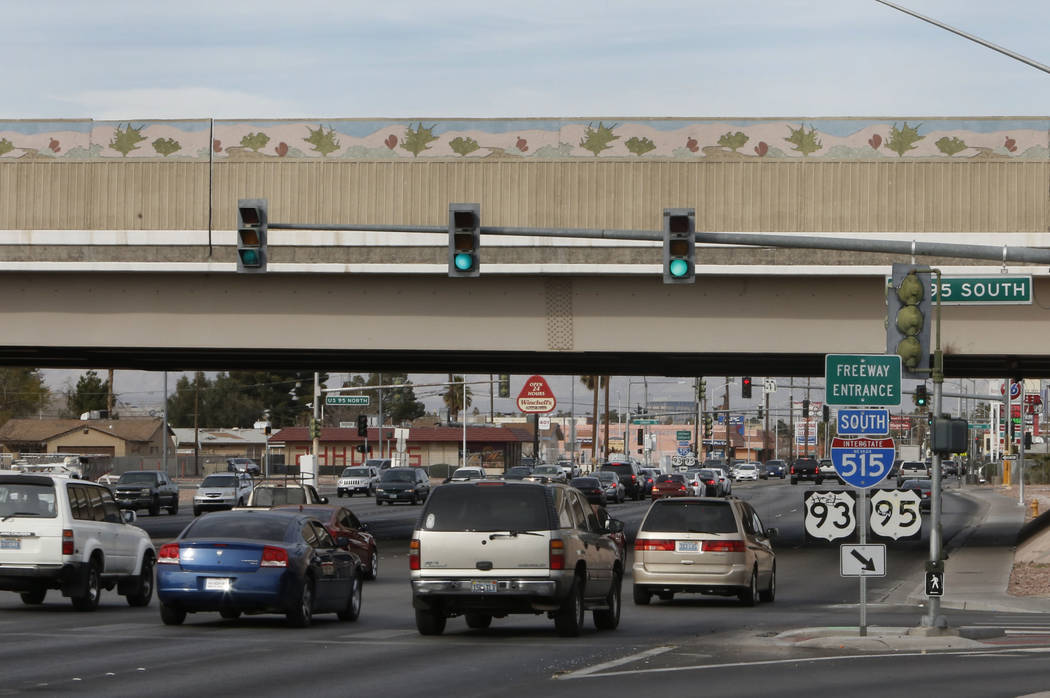Nevada’s bridges ranked among nation’s best but some ‘deficient’

Nevada’s network of bridges ranked among the best in the nation for a fifth consecutive year, but a handful of spans are still deemed “deficient,” according to a transportation trade group.
The roads aren’t in danger of collapsing but require some upgrades to line up with federal standards, the American Road and Transportation Builders Association said last week.
Of nearly 2,000 bridges in Nevada, only 1.5 percent were classified by the trade group as “structurally deficient,” compared with the national average of 9 percent.
“I think what helps us is the fact that a lot of Nevada’s infrastructure is still fairly new,” said Tony Illia, a spokesman for the Nevada Department of Transportation.
“The southern end of the state has a dry climate, so structures aren’t affected by the same freeze-and-thaw effect caused by cold weather,” Illia said. “It’s important to build infrastructure but twice as important to maintain and keep it up, so we allocate the necessary funds to maintain our resources.”
Federal laws require all bridges, freeway overpasses and other structures to undergo assessments at least once every two years, leading to $17 million in repairs for 27 bridges across Nevada in 2015 and 2016, NDOT officials said.
Although figures are still being tallied for the 2017 and 2018 fiscal years, projections show that roughly $10 million will be spent for additional bridge work statewide.
Despite the high marks statewide, the association’s report found four bridges in the east Las Vegas Valley to be structurally deficient.
A bridge at Boulder Highway and U.S. Highway 95 is scheduled for replacement, with a construction contract expected to be advertised this summer, Illia said.
NDOT officials said three other deficient bridges slated for rehabilitation or replacement within the next five years are located at: U.S. 95 and Desert Inn Road; U.S. 95 and Eastern Avenue; and Paradise Road over the Tropicana Wash.
The report also found that 252 new bridges were built in Nevada over the past decade, 30 of which have undergone “major reconstruction.”
Additionally, the study’s authors found that 254 bridges statewide require repairs totaling $605.8 million.
Traveling in center median
Many of us have spotted motorists who pull into the center median and use it as a traffic lane in an attempt to get past other vehicles. Jay from Las Vegas wanted to know whether the maneuver is a legal way to bypass traffic, given the fact that solid yellow lines mean “do not cross.”
Trooper Jason Buratczuk of the Nevada Highway Patrol said drivers cannot travel more than 200 feet in the center lane. If they don’t turn brfore hitting that distance, they could be cited.
Additionally, Buratczuk noted that drivers turning left out of a side-street or private drive into the center lane must merge with traffic within 50 feet.
Lights give preference to Lake Mead
With the housing construction boom between Lake Las Vegas Parkway and Boulder Highway, Joyce from Henderson wanted to know whether the signal timing along Lake Mead Boulevard should be adjusted.
“The green lights are extremely long for smaller cross streets with little to no traffic,” Joyce wrote in an email to the Road Warrior.
The questions prompted the Regional Transportation Commission of Southern Nevada to investigate this stretch of Lake Mead Boulevard. RTC spokeswoman Catherine Liu said the signals are programmed to stay green for Lake Mead unless a motorist is turning out of a smaller street or a pedestrian needs to cross.
When the green light ends for smaller streets, it takes about seven seconds to cycle back to a red light due to the width of Lake Mead, Liu said.
“Lake Mead Parkway is a busy corridor that we monitor constantly for improvements,” Liu said.
Cameras are watching
Greg regularly drives north on Interstate 15 toward Overton and noticed cameras mounted on poles that were recently installed near the Apex Industrial Park in North Las Vegas.
The pole-mounted cameras and accompanying radar system were put in place as part of a $1.8 million “intelligent infrastructure” upgrade, Illia said.
The information is relayed to the regional traffic management center, where workers can dispatch crews in case of an accident, adjust signal timing and post messages on digital signs along the freeway.
Questions and comments should be sent to roadwarrior@reviewjournal.com. Please include your phone number. Follow @RJroadwarrior on Twitter.